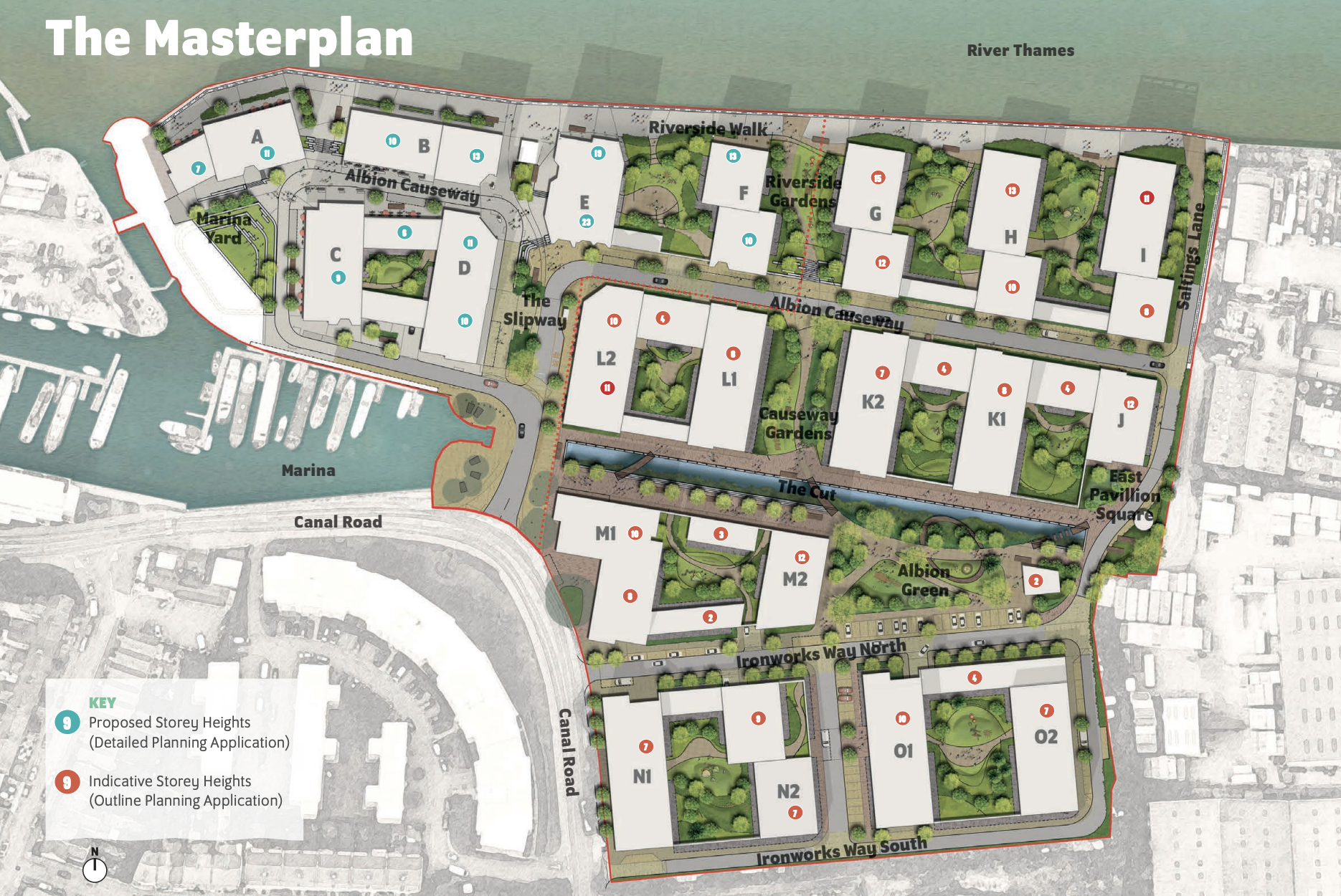
Test
Did you miss our previous article…
https://www.clarkeconstructioncreations.com/?p=110

Industry leaders such as APTIM, Barton Malow and Boldt are turning to Autodesk Construction Cloud’s project management and field execution solution to reduce risk, drive efficiencies and boost margins
San Francisco, Calif., July 27, 2021 – Autodesk, Inc. (NASDAQ: ADSK) today announced that Autodesk Build, the project management and field execution solution of Autodesk Construction Cloud, is now being used on over 8,000 active customer projects across the globe since being made available in February 2021. Construction teams are increasingly turning to Autodesk Build to bolster quality, safety and cost management workflows, and connect project data across the construction lifecycle in a single solution that is easy to deploy, adopt and use.
Contractors and owners adopting Autodesk Build to connect their project teams, data and workflows include:
Autodesk Build unifies best-in-class features from BIM 360 and PlanGrid with powerful new capabilities to deliver a cloud collaboration environment where information sharing and workflows are both tightly-controlled and highly-configurable. The solution features collaborative workspaces for project, cost, quality and safety management, as well as field collaboration and project closeout, and ties them all together in a common data environment.
With the project management features available in Autodesk Build and its PlanGrid Build app, which is purpose-built for mobile field collaboration, teams can organize and connect on RFIs, submittals, meeting minutes and predictive insights, staying ahead of any issues that could result in project risks. Using the cost management toolset, teams can enhance collaboration with project owners and suppliers by bringing them into the system to review contracts, change orders and payment applications securely, with confidence that any of their sensitive information will be safeguarded.
“Managing information across various technology systems can be counterproductive, leaving our teams and data siloed and ultimately resulting in increased rework, delays and risks,” said Werner Herbots, CEO of Polytek. “To deliver our projects with excellence, it’s essential that we have a powerful construction management platform to stay connected and coordinated. Autodesk Build empowers us to manage all aspects of a project from one single location so our workflows for RFIs, submittals, change orders and other critical processes are all tightly connected, and the team can easily collaborate and track progress.”
“Cost management in Autodesk Build creates transparency by gathering financial activities in a central location to easily track status and see how a change order is progressing and impacting budget,” said Emily Rech, program manager at Pond. “With Autodesk Build, we can remove information silos and drive accountability across project teams.”
Autodesk Build empowers stakeholders across construction teams to stay in sync, enhance collaboration capabilities, mitigate risks and enable data-driven decision making by focusing on:
“Bringing the entire project team together in Autodesk Build’s common data environment keeps everyone on the same page to minimize errors and the need for anyone to wonder, ‘Am I getting this right?” said Jim Lynch, senior vice president and general manager, Autodesk Construction Solutions. “Significant adoption for Autodesk Build in the five short months since it’s been available signals that teams across the industry are making strategic technology investments to maximize their ability to deliver high quality projects within budgets and timelines.”
About Autodesk
Autodesk makes software for people who make things. If you’ve ever driven a high-performance car, admired a towering skyscraper, used a smartphone, or watched a great film, chances are you’ve experienced what millions of Autodesk customers are doing with our software. Autodesk gives you the power to make anything. For more information visit autodesk.com or follow @autodesk.
Media Contact
Niyati Desai
Autodesk
[email protected]
Autodesk, the Autodesk logo, Autodesk Construction Cloud, BIM 360, and PlanGrid are registered trademarks or trademarks of Autodesk, Inc., and/or its subsidiaries and/or affiliates in the USA and/or other countries. All other brand names, product names or trademarks belong to their respective holders. Autodesk reserves the right to alter product and services offerings, and specifications and pricing at any time without notice, and is not responsible for typographical or graphical errors that may appear in this document.
© 2021 Autodesk, Inc. All rights reserved.
The post Leading Construction Teams are Increasingly Adopting Autodesk Build appeared first on Digital Builder.
Staying on top of construction resource management is an absolute must. With today’s increasingly complex projects and tighter-than-ever timelines you simply can’t afford to misallocate the resources you have at your disposal.
There’s also the issue of labor shortages in construction. Research by the Associated General Contractors of America and Autodesk revealed that 80% of contractors are having difficulties finding qualified workers. As the industry continues to grapple with manpower challenges, you need to be smart about how you handle and assign labor resources.
This article will cover all that and more.
We’ll dive into the ins and outs of construction resource management, plus discuss best practices and tools that can help you ensure that all your resources are allocated effectively and are put to good use.
Let’s get started.
Construction resource management is the practice of planning and managing the use of construction resources, to ensure that projects are delivered on time and within budget.
Typically done by construction managers or project managers, construction resource management involves many tasks, including the following.
The goal of construction resource management is to maximize the utilization of resources and reduce waste, ultimately meeting the project’s objectives in the most efficient and cost-effective way possible.
Workforce planning — which is a key component of construction resource management — involves monitoring and allocating team members across projects.
Effective workforce planning entails monitoring schedules, team bandwidth, and jobsite capacities. Managers need to balance all these components to ensure that each project is well-staffed and that team members aren’t over- or under-allocated. It also involves reviewing the company’s manpower resources and forecasting workforce needs, so the firm can recruit accordingly.
Workforce planning is critical, particularly amidst issues like labor shortages. When you have limited manpower available, it’s even more important to keep a tight handle on your workforce.
There’s also the matter of labor logistics. The world is starting to open back up and everyone is eager to put the pandemic behind us, but some of the issues brought about by COVID-19 will linger well into 2021.
Some jobsites may continue to have limited capacity, so it’s essential to map out how teams are distributed in the field. Being mindful of capacity limits will keep construction sites safe and ultimately prevent any pandemic or health-related issues and delays.
Now that you know the fundamentals of construction resource management, let’s discuss the benefits that you’ll gain from the practice.
When you don’t have a handle on how much resources you need for your projects, you may end up allocating either too much or little to certain activities. This leads to double-work, wasted time, and delays — all of which add more costs to the project. For instance, the mismanagement of equipment or materials can result in excess spend that can be better used elsewhere.
Proper construction resource management can prevent such issues from happening. When you’re closely tracking the use of resources and reallocating them based on the project’s needs, you can ensure that time and money are always well-spent.
By implementing construction resource management, you can see to it that team members are assigned to the right place and they have what they need (i.e., equipment, materials, and supplies) to do their jobs well.
As such, teams are able to be more productive. There’s less downtime or waiting around, plus they can do their best work because they have the necessary resources at the right time.
Construction resource management gives you better visibility into your resources. The practice involves closely monitoring resource utilization, so you always know what you have at any given time.
This, in turn, helps you make well-informed decisions on how to use and allocate construction resources.
It’s not uncommon for projects to run into sudden changes. If you’re not prepared, you may end up with inadequate resources to cover unexpected needs.
You can avoid these situations by implementing proper construction resource management. When you constantly stay on top of how your budget, manpower, equipment, and materials are used, it’s much easier to re-evaluate and reallocate resources to cope with unforeseen project changes.
One of the first steps to effective construction resource management is mapping out a plan for how resources will be allocated and used. While the specifics of this process will vary depending on your teams and projects, here are some general steps and considerations to keep in mind when crafting your construction resource management plan.
Determine the project timeline and all activities associated with it. Iron out all the necessary details involved in the project. Itemize the tasks and activities that need to be completed and specify the deadlines for each milestone.
Determine the resources you need and the right allocations. Use the information from the previous step to figure out the right resource allocations for the project. At this stage, you’ll need to calculate the amount of resources required, assign them to the appropriate activities and project phases, and indicate when you’ll need them.
One thing you could do at this stage is to tap into your experience as well industry standards and previous project data to figure out the best allocations.
Secure the necessary approvals. The next step is to get approval for the resources that you’re planning to use. Coordinate with the necessary parties and decision makers and ensure that you have the authorization to use the resources at the appropriate time. Be sure to complete this step before the project kicks off.
Optimize and retool your plan when necessary. Your construction resource plan shouldn’t be set in stone. Keep an eye on it, even when the project is underway and don’t be afraid to pivot or launch a plan B if unforeseen issues arise.
Construction resource management shouldn’t be done manually. Equip yourself and your team with construction technologies that streamline the process of planning and allocating resources.
Consider the following.
BIM 360 Plan offers robust capabilities to help you view and monitor supply chain and jobsite resources. The software’s customizable project views enable you to see work plans in List, Ganntt, or Swimplane view, so whether you’re looking for an itemized list of resources and activities or prefer to get a high level view of the project, you can do so easily with BIM 360 Plan.
Bridgit is a leading workforce intelligence solution for construction pros. An excellent tool for planning and allocating manpower resources, Bridgit makes it easy to view which project roles are unfilled, so you can plan accordingly. It also has detailed reporting that offers insights into workforce utilization and project pipelines, enabling you to plan for your manpower needs.
Construction sites have many moving parts—including workers, equipment, and other materials—that need monitoring. However, the dynamic and fast-paced nature of jobsites make it difficult to do so. Enter Triax’s IoT solution designed for rugged working environments, Spot-r Mesh provides real-time visibility into all the resources you have on site. It’s low power requirements and easily deployable hardware give you actionable insights into your workforce and equipment on the construction site, making it simple to know resource location, utilization, and more.
Need detailed insights into workforce activities? Kwant.ai has you covered. The solution uses AI and IoT to monitor worker location and activities, giving you powerful intel for planning and allocating manpower. With Kwant.ai, you can easily see how workers are spending their time, which then helps you identify inefficiencies or areas that need to be optimized.
SkillSmart’s compliance reporting and tracking software has excellent data and analytics tools to help you plan and manage project resources. SkillSmart InSight not only lets you track labor and compliance, it also provides real-time reports that cover payroll, contractor wage rates, and supplier tracking, among others.
Another useful tool for labor allocation, LaborChart has several features for managing your construction workforce. One particularly helpful tool is the software’s Labor Allocation feature, which gives you a visual representation of your labor pool based on projects, trades, regions, and more.
You can’t complete projects without the right workers, equipment, and facilities, which is why it’s critical to plan and allocate your resources effectively. So, take the time to understand each project’s needs then figure out the right resource allocation. To make things easier, use technology to automate various tasks and generate the necessary reports.
For more best practices on construction management and technology, subscribe to our blog and get regular tips, stories, and news delivered to your inbox!
The post Construction Resource Management: Tips and Tools for Success appeared first on Digital Builder.
Did you miss our previous article…
https://www.clarkeconstructioncreations.com/?p=108

Developer St James Securities have submitted a full planning application to Derby City Council for a new 3,500 capacity entertainment and events venue at Becketwell.
The £48m venue will be located on the site of the former Pink Coconut nightclub and Laurie House offices at the heart of the wider mixed-use Becketwell development.
The purpose-built venue will be a fully flexible, scalable space capable of staging concerts, stand-up comedy, family shows, musical theatre, conferences, and exhibitions.

The main auditorium will have a maximum capacity of 3,500 and offer a range of different event configurations including a fully seated layout for up to 2,100.
Subject to planning consent being granted at a meeting in October, construction is set to start in early 2022, with handover to the operator in 2024.
The new performance venue will be owned by Derby City Council and run by operator ASM Global.

Oliver Quarmby, managing director of St James Securities, said: “A new large-scale venue is a key component of Derby’s masterplan for the city centre which has been developed collaboratively between the public and private sectors and we are tremendously excited to be working on this ambitious scheme to bring an outstanding, modern performance venue to the city.
“We have created a great scheme which will fill a significant gap in the city’s cultural landscape. This flexible venue will cater for major music and comedy acts as well as theatre content. The conference and events capability will support the growth of the region’s business community.
“The performance venue is set to ‘turbocharge’ the entire Becketwell scheme, allowing us to bring forward a new multi-storey car park and hotel and will be key to the future reinvigoration and repositioning of Derby city centre.”

Work is already underway on the £30m phase one of the scheme, which includes the construction of 259 build to rent apartments by GMI Construction.
Future planned phases of the scheme include up to 25,000 sq. m of new grade A offices and commercial space, a hotel and a multi-storey car park.


Did you miss our previous article…
https://www.clarkeconstructioncreations.com/?p=101


Listed below are ConstructConnect’s Hot Commercial Construction Projects, both public and private, for the week. Our Hot Projects showcases three currently bidding or sub-bidding projects from all 50 states and the District of Columbia pulled from our extensive database of construction leads.
![]()
Did you miss our previous article…
https://www.clarkeconstructioncreations.com/?p=97


Due to its complexity, much of the subject matter concerning the economy requires a detailed editorial commentary, often supported by relevant tables and graphs.
![]()
Did you miss our previous article…
https://www.clarkeconstructioncreations.com/?p=93

Contractors working on HS2 have begun excavating the first of five shafts that will provide ventilation and emergency access to the ten-mile long tunnels they are digging under the Chiltern hills.
Once complete, the 78m deep shaft near the village of Chalfont St Peter will be topped with a headhouse inspired by nearby barns and other agricultural buildings to help it fit into the surrounding landscape.
Below ground level, the shaft will reach down to the twin tunnels, with fans and other equipment designed to regulate air quality and temperature, remove smoke in the event of a fire and provide access for the emergency services.
The structure was designed by HS2 Ltd’s main works contractor Align JV – a team made up of Bouygues Travaux Publics, Sir Robert McAlpine, and VolkerFitzpatrick – working with its design partners Jacobs and Ingerop-Rendel, and the architect Grimshaw and landscape designers, LDA.
A 120 tonne drilling rig with a specialised cutting head was used to excavate the walls of the shaft, before concrete was poured in to form each of the 16 wall panels. Now, with the walls complete, the team are excavating the chalk from inside the shaft to reveal the full depth of the structure.
The two HS2 tunnel boring machines (TBMs) – named Florence and Cecilia – are expected to reach the shaft next year and complete their 10 mile journey in three years’ time. Once the TBMs have passed through, the team will build the internal vent shaft structures, basement works and install the equipment.
Around 18,000 cubic meters of material is expected to be excavated from the shaft, with the chalk set to be reused to landscape the site once construction is complete, taking trucks off locals roads and helping to create new chalk grassland habitats.

Rohan Perin, HS2 Ltd’s Project Client Director said: “The excavation at Chalfont St Peter shows how much progress we have already made in delivering the Chiltern tunnels. Topped with a headhouse inspired by the style of local barns and agricultural buildings, the shaft is one of the few elements of the tunnel which will be visible above ground level and shows just how seriously we are taking our responsibility to protect the landscape and natural environment.

How the site will look once work is finished
Daniel Altier, Align Project Director added: “I am delighted with the progress we have made with the Chalfont St Peter shaft and the fact that we have been able to put in place measures to limit disruption to the local community.
“We are very conscious to ensure that any permanent structures on the project fit into the surrounding landscape and the Chalfont St Peter headhouse is no exception.”
Before the start of construction, a temporary access road was built to link the site with the A413, Amersham Road. This has allowed construction traffic to avoid the centre of Chalfont St Peter and stopped heavy goods vehicles (HGVs) driving past Robertswood School and the Epilepsy Society.

A new temporary marshalled lorry holding area has also been established on the A413 near Gerrards Cross. HGVs can be held in this newly surfaced layby until their approach to the vent shaft site is clear – helping to reduce congestion and eliminate queueing at the site entrance.



Industry leaders have called for the acceleration of rules relaxing requirements for Covid-19 self-isolation for double-vaccinated construction workers.
The Construction Leadership Council is warning that sites will “grind to a halt” amid the pingdemic.
On August 16 regulations on self-isolation will be relaxed across the economy when anyone who has been double-jabbed will be able to continue to work if they are notified that they have been a contact of someone that has Covid-19.

But ahead of the change, construction businesses from merchants to manufacturers and consultants to contractors are being severely hampered as staff are having to stay home after being identified as a contact of a Covid-19 case, even if they are fully vaccinated.
The issue is further exacerbating existing difficult trading due to materials and staff shortages.
The CLC proposes that the 16 August relaxation be brought forward as soon as is possible.

CLC co-chair Andy Mitchell said: “We have reports from across the industry of plants, sites and offices having to wind down activities as staff have been asked to isolate.
“This is putting very significant pressure on the sector, risking project delivery and even the viability of some firms.
“Where staff are already fully vaccinated, and recognising that such people will be free to work from 16 August anyway, we are asking the Government to bring forward this
date for essential industries like construction, ensuring that the industry doesn’t grind to a halt.”


Did you miss our previous article…
https://www.clarkeconstructioncreations.com/?p=81

Developer Joseph Homes has got the planning thumbs up for a landmark regeneration scheme of 1,500 flats around the canal basin in Gravesend, Kent.
The 5.5ha brownfield site, situated on the south bank of the River Thames, will need £16m of enabling and infrastructure works.
Joseph Homes is proposing to spend over £3m upgrading flood defences, £6m on contaminated land remediation and £7m on transferring electricity from Ebbsfleet.

The first phase of the scheme, which received detailed planning in the hybrid planning application, consists of six blocks with one rising to 23-storeys tall.

The development will include a mix of affordable housing as well as Later Living and build-to-rent homes as well as 4,500sq m of space for local businesses including shops, restaurants and workspaces.

Site remediation and clearance will get underway in the autumn with first construction scheduled to start in 2023
Craig Carson, Development Director at Joseph Homes said: “We are thrilled that Gravesham Borough Council unanimously voted in favour to grant planning permission for Albion Waterside.

“Our masterplan regeneration for this site is one we’ve worked on with our brilliant project team – JTP, Barton Willmore, Ramboll, Caneparo Associates, Montagu Evans, Patrick Parsons and BDP Landscape – to ensure that we will deliver a vibrant and truly sustainable neighbourhood for Gravesend.”
Ian Fenn, Partner at JTP said: “This site offers huge potential to transform an underused industrial area into a thriving new riverside neighbourhood, which will re-establish old links and connections and create new ones, whilst also marking this important location on the River Thames.”



Private contractor McLaughlin & Harvey saw pre-tax profits slide to £5.9m from £11.5m last year as extra costs from Covid safe working took their toll on the business.
But despite these challenges, the Cheevers family-owned group held revenue at a near-record level of £480m, down 6% from the year before, with operating margins at 1.1%.
Both the construction and civil engineering division, which contributed £417m of total revenue, continued to trade profitably despite the additional challenges and extra costs that Covid brought.

Over the year the group, which employs 800 staff out of offices in offices in Belfast, Glasgow, London, Edinburgh, Liverpool and Bristol, received £2.2m in furlough support cash from Government.
Finance director David O’Neill said that other smaller group businesses – distribution and the environmental landfill business – also both performed strongly last year, building a platform for the year group ahead.

“The current order book, tender opportunities and performance for 2021 are very healthy and we anticipate a strong performance,” said O’Neill.
“The fundamentals of each of the businesses with McLaughlin & Harvey Group are strong. The balance sheet for the group shows net assets of £57.6m supported by net cash of £69.9m.”
In June, McLaughlin & Harvey launched a new dedicated fit-out business called WorkSpace to offer clients a range of services spanning build, fit out, facilities management, bespoke joinery, and commercial furniture.
Richard Cheevers, McLaughlin & Harvey Director, said: “The company has built a strong reputation for delivering large scale construction and civil engineering schemes over many years, and recently the directors felt there was a need to create a dedicated division for projects outside the scope and scale of those traditionally associated with McLaughlin & Harvey.


Did you miss our previous article…
https://www.clarkeconstructioncreations.com/?p=67